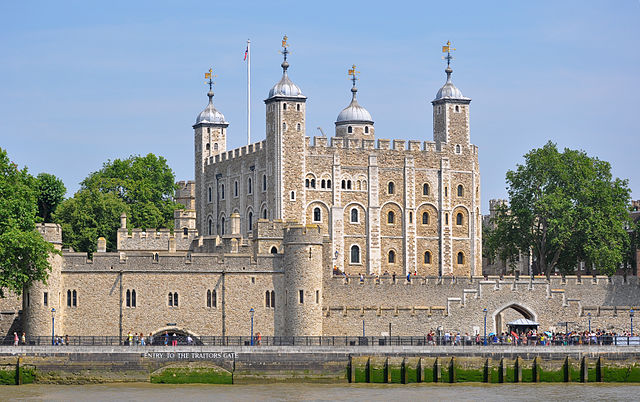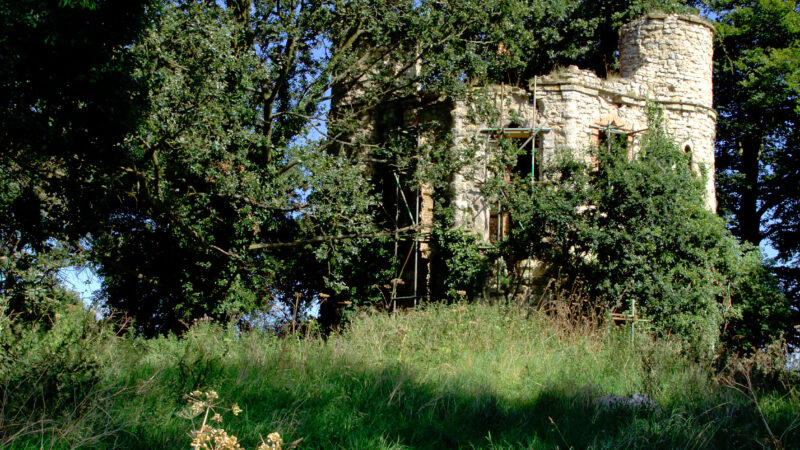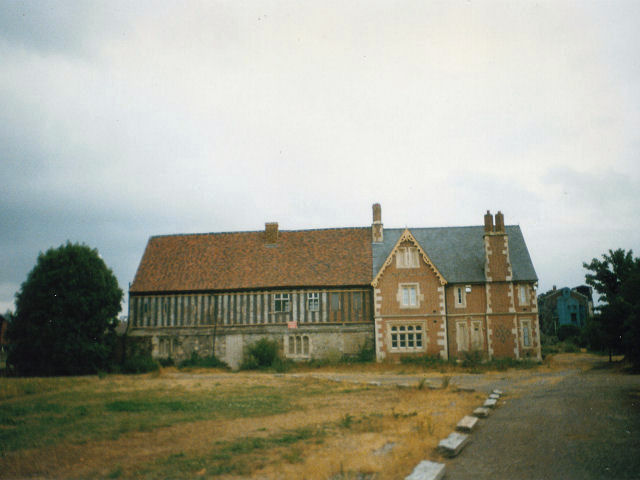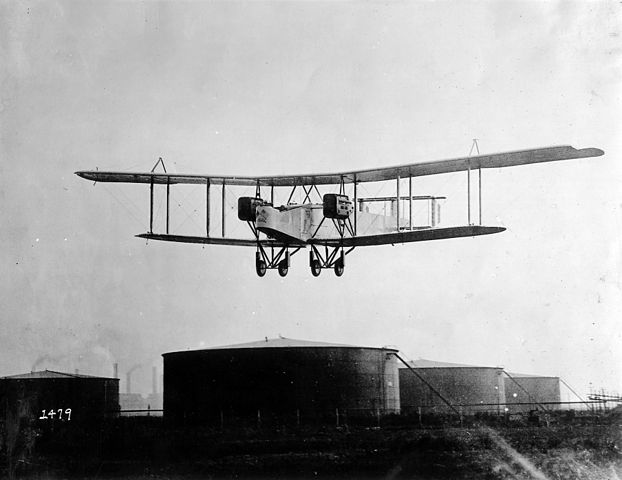Tower of London, England, UK

Her Majesty’s Royal Palace and Fortress, more commonly known as the Tower of London (and historically as The Tower), is a historic monument in central London, England, on the north bank of the River Thames. It is located within the London Borough of Tower Hamlets and is separated from the eastern edge of the City of London by the open space known as Tower Hill.
The Tower of London is often identified with the White Tower, the original stark square fortress built by William the Conqueror in 1078. However, the tower as a whole is a complex of several buildings set within two concentric rings of defensive walls and a moat.
The tower”s primary function was a fortress, a royal palace, and a prison (particularly for high status and royal prisoners, such as the Princes in the Tower and the future Queen Elizabeth I). This last use has led to the phrase “sent to the Tower” (meaning “imprisoned”).
It has also served as a place of execution and torture, an armoury, a treasury, a zoo, the Royal Mint, a public records office, an observatory, and since 1303, the home of the Crown Jewels of the United Kingdom.
Location
The Tower is located in the London Borough of Tower Hamlets, at the eastern boundary of the City of London financial district, adjacent to the River Thames and Tower Bridge. Between the river and the Tower is Tower Wharf, a freely accessible walkway with views of the river, tower and bridge, together with HMS Belfast and London City Hall on the opposite bank.
History
The White Tower
At the centre of the Tower of London stands the Norman White Tower built in 1078 by William the Conqueror (reigned 1066-87) inside the southeast angle of the city walls, adjacent to the Thames. This was as much to protect the Normans from the people of the City of London as to protect London from outside invaders. William appointed Gundulf, Bishop of Rochester, as the architect. Fine Caen stone, imported from France, was used for the corners of the building and as door and window dressings, though Kentish ragstone was used for the bulk of the edifice. According to legend the mortar used in its construction was tempered by the blood of beasts. Another legend ascribed the Tower not to William but to the Romans. William Shakespeare in his play Richard III stated that it was built by Julius Caesar.
The White Tower is 90 feet (27 m) high and the walls vary from 15 feet (4.5 m) thick at the base to almost 11 feet (3.3 m) in the upper parts. Above the battlements rise four turrets; three of them are square, but the one on the northeast is circular, in order to accommodate a spiral staircase. This turret was briefly used as the first royal observatory in the reign of Charles II. Completing the defences to the south of the Tower was the bailey.
In the 1190s, King Richard the Lionheart (reigned 1189-99) enclosed the White Tower with a curtain wall, and had a moat dug around it filled with water from the Thames. Richard utilised the pre-existing Roman city wall, to the east, as part of the circuit. Part of the wall he built was incorporated into the later circuit wall of Henry III and is still extant, running between the Bloody Tower and the Bell Tower, the latter of which also dates to his reign. In 1240 Henry III had the exterior of the building whitewashed, which is how it got its name.
The Inmost Ward
In the early thirteenth century Henry III (reigned 1216-72) transformed the Tower into a major royal residence and had palatial buildings constructed within the Inner Bailey to the south of the White Tower. This Inmost Ward was entered by the now ruined Coldharbour Gate to the NW and bounded by a wall, fortified by the Wakefield Tower to the SW, the Lanthorn Tower to the SE, and the now ruined Wardrobe Tower to the NE. The well appointed Wakefield Tower and the Lanthorn Tower were integral parts of this new royal palace, and adjoined the now demolished Great Hall situated between them. The Tower remained a royal residence until the time of Oliver
Cromwell, who demolished some of the old palatial buildings.
The Inner Ward
The White Tower and Inmost Ward are situated in the Inner Ward, defended by a massive curtain wall, built by Henry III from 1238 onwards. In order to extend the circuit the city wall to the east was broken down, despite the protests of the citizens of London and even supernatural warnings, according to chronicler Matthew Paris and the wall has thirteen towers.
The Outer Ward
Between 1275 and 1285 by Edward I (reined 1272-1307) built an outer curtain wall, completely enclosing the inner wall and thus creating a concentric double defense. He filled in the moat and built a new moat around the new outer wall. The space between the walls is called the Outer Ward. The wall has five towers facing the river.
On the north face of the outer wall are three semicircular bastions, the Brass Mount, the North Bastion and Legge”s Mount.
The water entrance to the Tower is often referred to as Traitor”s Gate because prisoners accused of treason such as Queen Anne Boleyn and Sir Thomas More are said to have passed through it. Traitor”s Gate cuts through St Thomas”s Tower and replaced Henry III”s Watergate in the Bloody Tower behind it. Behind Traitors Gate in the pool was an engine used to raise water to a cistern located on the roof of the White Tower. The engine was originally powered by the force of the tide or by horsepower and eventually by steampower; this was adapted around 1724 to drive machinery for boring gun barrels. It was removed in the 1860s. The Tudor Timber Framing seen above the great arch of Traitor”s Gate dates from 1532 and was restored in the 19th century.
The Western Entrance and Moat
A ditch or moat, now dry, encircles the whole, crossed at the southwestern angle by a stone bridge, leading to the Byward Tower from the Middle Tower – a gateway which had formerly an outwork, called the Lion Tower.
The Tower today is principally a tourist attraction. Besides the buildings themselves, the British Crown Jewels, a fine armour collection from the Royal Armouries, and a remnant of the wall of the Roman fortress are on display.
The tower is manned by the Yeomen Warders (known as Beefeaters), who act as tour guides, provide security, and is a tourist attraction in their own right. Every evening, the warders participate in the Ceremony of the Keys as the Tower is secured for the night.
Prisoners
The first prisoner was Ranulf Flambard in 1100 who, as Bishop of Durham, was found guilty of extortion. He had been responsible for various improvements to the design of the tower after the first architect Gundulf moved back to Rochester. He escaped from the White Tower by climbing down a rope, which had been smuggled into his cell in a wine casket. On of the last prisoners held was the Kray Twins for a few days in 1952 for failing to report for National Service.
Executions
Lower-class criminals were usually executed by hanging at one of the public execution sites outside the Tower. High-profile convicts, such as Sir Thomas More, were publicly beheaded on Tower Hill. Seven nobles (five of them ladies) were beheaded privately on Tower Green, inside the complex, and then buried in the “Chapel Royal of St. Peter ad Vincula” (Latin for “in chains,” making him an appropriate patron saint for prisoners) next to the Green. Some of the nobles who were executed outside the Tower are also buried in that chapel.
George, Duke of Clarence, the brother of Edward IV of England, was executed for treason in the Tower in February 1478, but not by beheading (and probably not by being drowned in a butt of Malmsey wine, despite what Shakespeare wrote).
When Edward IV died, he left two young sons behind: the Princes in the Tower. His brother Richard, the Duke of Gloucester, was made Regent until the older of his two sons, Edward V, should come of age. According to Thomas More”s History of Richard III, Richard hired men to kill them, and, one night, the two Princes were smothered with their pillows. Many years later, bones were found buried at the foot of a stairway in the Tower, which are thought to be those of the princes. Richard was crowned King Richard III of England.
The last execution at the Tower was that of German spy Josef Jakobs on 14 August 1941 by firing squad formed from the Scots Guards.
Recent History
The military use of the Tower as a fortification, like that of other such castles, became obsolete with the introduction of artillery, and the moat was drained in 1830. However the Tower did serve as the headquarters of the Board of Ordnance until 1855, and the Tower was still occasionally used as a prison, even through both World Wars. In 1780, the Tower held its only American prisoner, former President of the Continental Congress, Henry Laurens. In World War I, eleven German spies were shot in the Tower. Irish rebel Roger Casement was imprisoned in the Tower during his trial on treason charges in 1916.
In 1942, Adolf Hitler’s deputy, Rudolf Hess, was imprisoned in the tower for four days. During this time, RAF Wing Commander George Salaman was placed in the same cell undercover, impersonating a Luftwaffe officer, to spy on Hess. Although acting covertly and not held as a true inmate, Salaman remains the last Englishman to be locked in the Tower of London. The tower was used as a prison for German prisoners of war throughout the conflict.
Waterloo Barracks, the location of the Crown Jewels, remained in use as a base for the 1st Battalion Royal Fusiliers (City of London Regiment) into the 1950s; during 1952, the Kray twins were briefly held there for failing to report for national service, making them among the last prisoners of the Tower; the last British citizen held for any length of time was the traitorous Army officer Norman Baillie-Stewart from 1933 to 1937.
Although it is no longer a royal residence, the Tower officially remains a royal palace and maintains a permanent guard: this is found by the unit forming the Queen”s Guard at Buckingham Palace. Two sentries are maintained during the hours that the Tower is open, with one stationed outside the Jewel House and one outside the Queen”s House.
In 1974, there was a bomb explosion in the Mortar Room in the White tower leaving one person dead and 41 injured. No one claimed responsibility for the blast, however the police were investigating suspicions that the IRA was behind it.
In 2007 Moira Cameron became the first female Beefeater in history to go on duty at the Tower of London. Cameron beat five men to the job as a Yeomen Warder.
Administration
The Tower of London and its surrounding area has always had a separate administration from the adjacent City of London. It was under the jurisdiction of Constable of the Tower who also held authority over the Tower liberties until 1894. In addition the Constable was ex-officio Lord Lieutenant of the Tower division of Middlesex until 1889 and head of the Tower Hamlets Militia until 1871. Today the Tower is within the boundaries of the London Borough of Tower Hamlets.
Yeomen Warders
The tower is fully staffed with 35 Yeomen Warders (also known as Beefeaters), at all times, the most senior is titled the Chief Yeoman Warder, and his second-in-command is titled the Yeoman Gaoler, they answer to the Constable of the Tower. Yeomen Warders have served as defenders of the Crown Jewels, prison guards, and, since the time of Queen Victoria, tour guides to visitors, and they have become a tourist attraction in their own right, something the warders themselves acknowledge. The current role of the Yeoman Warder is that of tour guides, and, should the need arise, prison guards.
Crown Jewels
The Crown Jewels have been kept at the Tower of London since 1303, after they were stolen from Westminster Abbey. It is thought that most, if not all, were recovered shortly afterwards. After the coronation of Charles II, they were locked away and shown for a viewing fee paid to a custodian. However, this arrangement ended when Colonel Thomas Blood stole the Crown Jewels after having bound and gagged the custodian. Thereafter, the Crown Jewels were kept in a part of the Tower known as Jewel House, where armed guards defended them. They were temporarily taken out of the Tower during World War II and reportedly were secretly kept in the basement vaults of the Sun Life Insurance company in Montreal, Canada, along with the gold bullion of the Bank of England.
Ghosts
The Tower of London is reputedly the most haunted building in England. The ghost of Queen Anne Boleyn, beheaded in 1536 for treason against King Henry VIII, has allegedly been seen haunting the chapel of St Peter-ad-Vincula, where she is buried, and walking around the White Tower carrying her head under her arm. Other ghosts include Henry VI, Lady Jane Grey, Margaret Pole, and the Princes in the Tower. In January 1816 a sentry on guard outside the Jewel House witnessed an inexplicable apparition of a bear advancing towards him. The sentry reportedly died of fright a few days later.
External Links
Tower of London – Website




